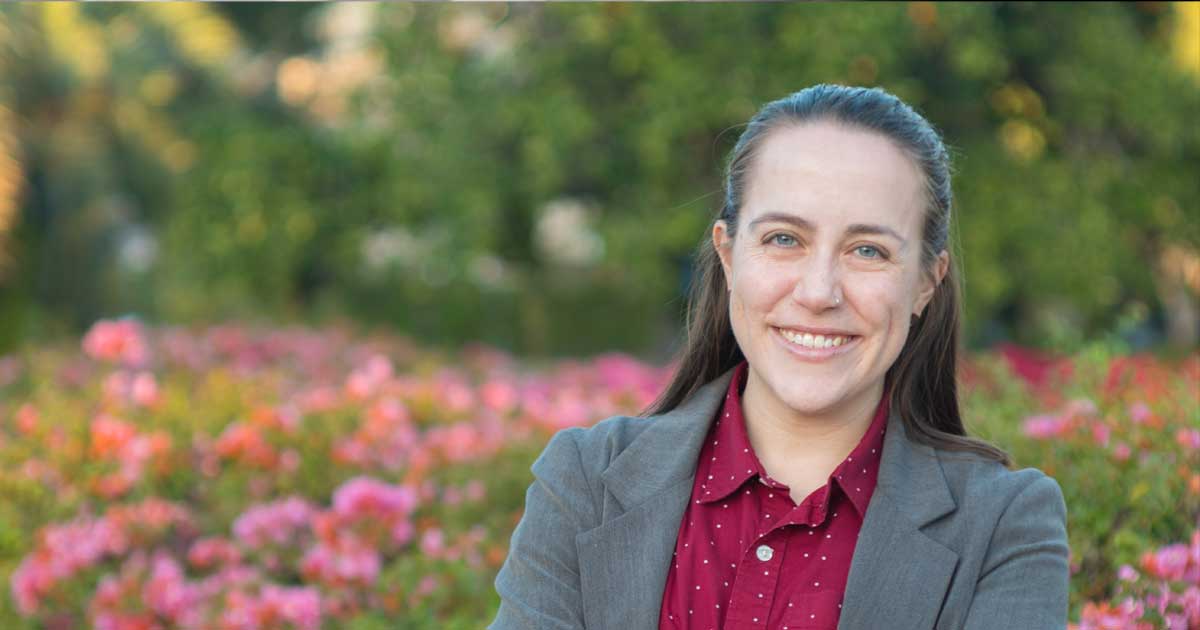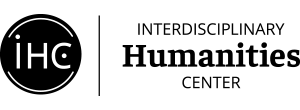
18 Nov Meet Public Humanities Fellow Anna Bax
November 18, 2019
Anna Bax is a Ph.D. candidate in the Department of Linguistics. She is a sociocultural linguist fascinated by the connections between language, identity, power, and inequality. Her dissertation research focuses on young Mixtec women’s multilingual identity practices in the California context. As an IHC Public Humanities Graduate Fellow, Bax is completing a fellow-designed community project working with a speech-language pathologist (SLP) to develop linguistic resources for SLPs who work with the Mixtec community in Ventura County.
Tell us about your fellow-designed project and your community partner.
For my fellow-designed project, I’m working with a speech-language pathologist (SLP), Dr. Rachel Enevoldsen (CCC-SLP, SLP-D), who works for an elementary school district in Oxnard, California. Together, we’ve been working on creating linguistic resources for SLPs who work with the Mixtec [MEES-tek] community in Ventura County.
Mixtecs are a large and diverse Indigenous Mexican group whose homelands are located in the present-day Mexican states of Oaxaca, Guerrero, and Puebla. There are over 20,000 Mixtecs currently living in Ventura County, as well as members of other Indigenous Mexican groups, e.g., Zapotecs and Otomís. Tens of thousands more Mixtecs live all across the state of California, mostly concentrated in agricultural areas. Mixtecs face racism and anti-Indigenous and economic oppression in both Mexico and in the United States, and language plays a role in this: there is often a lot of stigma against all Indigenous Mexican languages, which are completely unrelated to Spanish. Tu’un Savi (Mixtec, literally the language of the rain) in particular is highly linguistically diverse; there is huge variation between its many different regional varieties, some of which are not mutually intelligible. Most of these varieties are not well-documented; all of them are severely under-resourced in institutional settings like schools and government bureaucracy, whether in Mexico or the US. Many Mixtec individuals are monolingual Tu’un Savi speakers or are Tu’un Savi-dominant Spanish bilinguals. This means that when they move to the US, often to work backbreaking agricultural jobs, they have to learn both Spanish (to communicate with other local Mexicans) and English (to participate in dominant institutions). The Mixtec community in Oxnard has been doing fantastic work over the last two decades to create institutional resources for speakers of Tu’un Savi. Much of my work in Oxnard, as well as that of other UCSB linguists, involves trying to support the community’s efforts for linguistic justice and intergenerational language maintenance. My fellow-designed project grows out of this collaborative work.
There are a lot of Mixtec children in the Oxnard school system who are bi- or trilingual, but most teachers and SLPs know very little about Tu’un Savi and its differences from Spanish and English. In general, SLPs face a challenging task when working with multilingual speakers. When evaluating whether a child has a language disorder, they have to figure out whether observed atypical speech patterns are actually indicative of a disorder or whether they’re just the natural result of the child growing up multilingual (i.e., having a “Mixtec accent”). SLPs want to avoid overdiagnosing multilingual clients as having disorders when they don’t (which is unfortunately all too common: bilingual children, as well as speakers of minoritized varieties like African American English, are disproportionately over-referred to speech therapy services). On the other hand, they want to avoid overlooking children who are actually in need of services simply because they don’t understand what (a)typical language development looks like in that speech community.
My community partner was already well aware of the need for more materials and resources about Tu’un Savi when our collaboration began. But for Tu’un Savi, like many minoritized languages, this information mostly exists in a few academic articles or books, which are often locked away behind a paywall. Even if SLPs can access these resources, they’re usually written for an audience of other linguists – not with the needs of clinical practitioners in mind. My fellow-designed project involves creating a set of resources about Tu’un Savi for SLPs in Ventura County, including a comparison of Tu’un Savi, Spanish, and English phonological and grammatical structures, as well as information about Mixtec cultural and communicative norms.
What is the anticipated outcome of this collaboration for your community partner and for other members of the community?
In addition to the comparative linguistic and communicative materials described above, my community partner and I are working on creating preliminary screening materials for SLPs who work with Mixtec children. The overall goal is to give SLPs more accurate and detailed resources about the linguistic diversity of their clients, thereby leading to more accurate diagnoses of children in the Mixtec community. We’re also talking about ways to ensure language access for Tu’un Savi-dominant parents so that they can be more included in their child’s education, at least with regard to speech services.
In the coming months my community partner and I will give a presentation about these materials to the local SLP professional development group. I’ve also created a website to distribute these resources to SLPs throughout California (and beyond!) who work with Mixtec clients. We’ve submitted an abstract to the 2020 California Speech-Hearing Association conference to present the results of our collaboration, and we’re eventually planning to coauthor a paper.
Can this project and its results be replicated for other locations or communities of minority-language speakers?
Absolutely! In fact, we really hope that it will be replicated. My community partner and I are actually giving a talk at the 2020 Linguistic Society of America conference in January about this exact topic. There is astonishing linguistic diversity in the US, thanks to speakers of Indigenous and immigrant languages. Many of these languages are spoken by members of the local communities around the universities in which linguists work. I believe that even if a linguist doesn’t have extensive experience working with a particular local language, our linguistic training still equips us with the tools needed to “translate” any formal academic description of linguistic structure into a style understandable by non-specialists (whether that’s SLPs, teachers, government officials, medical personnel…). This can obviously be of great benefit to the language community. There are fruitful avenues for this work to be incorporated into linguists’ pedagogy, too: for instance, you could make it part of a service-learning undergraduate course or a graduate-level Field Methods/language documentation seminar.
Mixtec communities are the focus of your dissertation research. Was your project proposal an outgrowth of this research?
This project is an outgrowth of my broader collaborative work with the Mixtec community, but not of my dissertation specifically, which focuses on language and identity, especially looking at how young Mixtec women in California negotiate their community’s language shift away from Tu’un Savi to Spanish and English. This project has been a great way to stay grounded in doing work that is concretely beneficial to the local Mixtec community even while I’m in dissertation-writing mode.
Also, the young women I’ve worked with during my dissertation have told me that when they were in school they had negative experiences with teachers and other school staff who had negative attitudes toward Tu’un Savi. I hope that providing educational materials for school personnel can prevent future generations of Mixtec students from having to confront similar negative ideologies.
Has your project had any impact on your dissertation research or conclusions?
One chapter of my dissertation looks at an interaction in which one Mixtec speaker teaches Tu’un Savi to her 7-year-old brother, who is growing up trilingual. The project has definitely informed the way that I analyze the data. But it’s actually more the other way around: research I’ve done as part of my dissertation has informed this project. For example, based on my dissertation data, I’ve identified at least two potential pronunciation effects that arise when Tu’un Savi speakers speak Spanish. (I’ve already begun a pilot phonetic study of these variables and will investigate them further in my post-dissertation research.) These features have made their way into the materials I’m writing for SLPs as examples of normal results of contact between Tu’un Savi and Spanish.
Has your work with community partners and in the Public Humanities Graduate Fellows Program impacted your view of collaboration between scholars and community partners and organizations?
As a linguist, I’ve always felt strongly drawn to community-engaged research and collaborative projects. However, I had the impression that this kind of work wasn’t supported by many R1s – it might be seen as ancillary to your “real work,” as something you did in your spare time. In contrast, the existence of the Public Humanities Graduate Fellows Program and the institutional support it offers for this work is amazing. The support I’ve received as a part of the program makes me feel like this meaningful collaborative work is deeply valued by UCSB, not seen as a distraction from my other projects. I hope more universities implement similar programs.
As you near the completion of your dissertation, what are your plans or goals for your academic and community-engaged work?
I’m currently applying for faculty positions, and I find myself most excited about the possibility of working at schools that have an established office of community relations and where many members of the faculty are doing community-engaged research and collaborative work with communities. I guess you could say that this program has honed my lens for evaluating the kind of academic environments in which I’d like to work. More broadly, I plan to continue doing community-engaged work throughout my career as a linguist. I want to keep working with the Mixtec community in California, and also with other groups of speakers local to my future university community, wherever I end up next.
Click here to learn more about IHC Public Humanities Graduate Fellows Fellow-Designed Community Projects and Internships.

